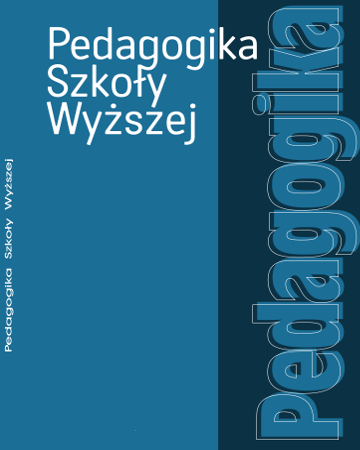
ISSN: 2083-4381
OAI
DOI: 10.18276/psw.2017.2-11



Issue archive /
2/2017 (22)
Językowa rzeczywistość edukacyjna w wielokulturowych Chinach. Jedność czy różnorodność?
(LANGUAGE EDUCATIONAL PRACTICES OF MULTICULTURAL CHINA. UNITY OR PLURALITY?)
| Authors: |
Anna
Mańkowska
Uniwersytet im. Adama Mickiewicza w Poznaniu |
| Keywords: | comparative education education in China Chinese mandarin minority education China Tybet Yi |
| Data publikacji całości: | 2018 |
| Page range: | 12 (121-132) |
Abstract
The article attempts to present educational language practices of China. The educational school system for multicultural and multilingual China has been introduced to the society many years ago, but still domination of Chinese mandarin is visible, even at independent land such as Tibet or Yi. The tension between state recommendation and practical choices made a Jaus’ face of Chinese educational reality and become an example of “soft power” strategy implemented through educational system into society. The main purpose of presented article is to describe educational practices dedicated to ethnic and cultural minorities from primary level to higher education.
Download file
Article file
Bibliography
| 1. | Bass, C. (1998). Education in Tibet: Policy and Practice since 1950 (Politics in Contemporary Asia). Lon- don: Zed Books. |
| 2. | He, B. (1998). Can Kymlicka’s Liberal eory of Minority Rights be Applied in East Asia? W: P. van der Velde, A. McKay (red.), New Developments in Asian Studies (s. 20–44). London–New York: Kegan Paul International. |
| 3. | Kurpaska, M. (2010). Chinese language(s): a look through the prism of e Great dictionary of modern Chinese dialects. Berlin/New York: DE GRUYTER MOUTON. |
| 4. | Leibold, J. (2013). Ethnic Policy in China: Is Reform Inevitable? Policy Studies, no 68. Pobrano z: https://www.eastwestcenter.org/sites/default/ les/private/ps068.pdf (12.09.2017). |
| 5. | Leibold, J., Yangbin, Ch. (2014). Introduction: Minority Education in China Minority Educa- tion in China: Balancing Unity and Diversity in an Era of Critical Pluralism. W: J. Leibold, Y. Chen (red.), Minority education in China: balancing unity and diversity in an era of critical plura- lism (s. 1–24). Hong Kong: Hong Kong University Press. |
| 6. | Liu, J., Edwards, V. (2017). Trilingual Education in China: Perspectives from a University Pro- gramme for Minority Students. International Journal of Multilingualism, 14 (1), 38–52. |
| 7. | Mańkowska, A. (2016). Dzieciństwo i edukacja w Chinach w perspektywie nierówności spo- łecznych. Studia Edukacyjne, 39, 235–248. |
| 8. | National Bureau of Statistics. Pobrano z: http://www.stats.gov.cn/tjsj/tjgb/rkpcgb/qgrkpcgb/ 201104/t20110428_30327.html (1.01.2018). |
| 9. | Peng, Ch. (2015). 高考命题重回“全国卷”时代 [Egzaminy kwali kujące na studia wracają do „ram państwowych”]. Pobrano z: http://news.xinhuanet.com/edu/2015-04/03/c_127653175.htm |
| 10. | (1.01.2018). |
| 11. | Postiglione, G.A. (1998). State Schooling and Ethnicity in China: e Rise or Demise of Multicultural- |
| 12. | ism? Pobrano z: http:// les.eric.ed.gov/fulltext/ED427100.pdf (12.08.2017). |
| 13. | Rong, M. (2014). Bilingual education and language policy in Tibet. W: J. Leibold, Y. Chen (red.), Minority education in China: balancing unity and diversity in an era of critical pluralism (s. 83–106). |
| 14. | Hong Kong: Hong Kong University Press. |
| 15. | Smith, W. (2009). China’s Tibet? Autonomy or assimilation? New York: Rowman & Little eld Pub- |
| 16. | lishers. |
| 17. | Stites, R. (1999). Writing cultural boundaries: National minority language policy, literacy plan- |
| 18. | ning, and bilingual education. W: G.A. Postiglione (red.), China’s national minority education: |
| 19. | Culture, schooling, and development (s. 95–130). New York: Falmer Press. |
| 20. | Teng, X. (2001). 文化变迁与双语教育 [Kulturowa zmiana i edukacja dwujęzyczna]. Beijing: Edu- |
| 21. | cation and Science Press. |
| 22. | eobald, U. (2015). Gaitu guiliu 改土歸流, transforming chieftainships into district administration. |
| 23. | Pobrano z: http://www.chinaknowledge.de/History/Terms/gaituguiliu.html (1.01.2018). Yang, R., Wu, M. (2009). Education for ethnic minorities in china: a policy critique. SA-eDUC |
| 24. | Journal. Special Edition on Education and Ethnicity, 6 (2), 117–131. |
| 25. | Young, I.M. (1998). Polity and Group Difference: A Critique of the Ideal of Universal Citizenship. Ethics, 99 (2), 250–274. |
| 26. | Zhao, Z. (2014). e trilingual trap: “Imagined” empowerment among ethnic Mongols in China. W: J. Leibold, Y. Chen (red.), Minority education in China: balancing unity and diversity in an era of critical pluralism (s. 239–257). Hong Kong: Hong Kong University Press. |